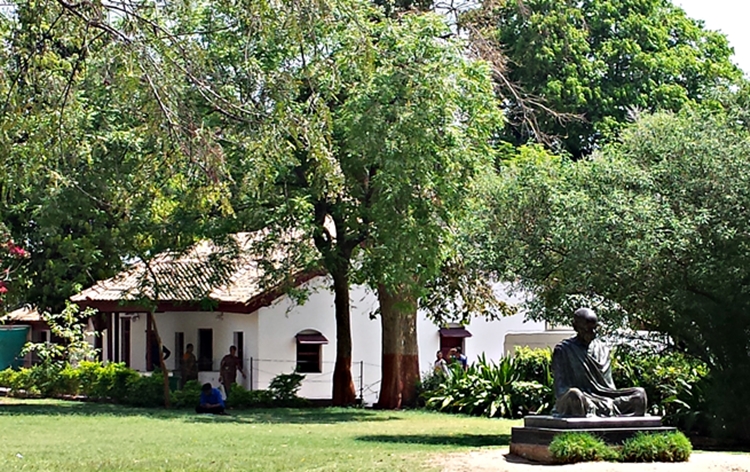Excerpt from “Travels through Gujarat, Daman, and Diu“, shortly to be published by Adam Yamey
[Ahmedabad]

When Gandhi returned to India from South Africa in 1915, having established Tolstoy Farm, an ashram in Natal in 1910, he created one on a small plot at Kochrab, south west of the walled city of Ahmedabad. Gandhi chose Ahmedabad for several reasons: it is a Gujarati speaking city; he had wealthy supporters there; it was an historic centre for handloom weaving; there were mill-owners sympathetic to his cause who would supply him with yarn for spinning; and, most importantly, it was in British territory rather than in a Princely State. It was important, he felt, that the struggle against the British should not be launched from non-British soil. After Ahmedabad, Gandhi established more ashrams in other parts of India. Because of outbreaks of disease at Kochrab and Gandhi’s desire for a larger area for experimenting with farming and khadi production, a new and larger ashram, the Sabarmati Ashram, was set up in 1917 on a site overlooking the Sabarmati, where it remains today. Gandhi lived there until 1930. In March of that year, Gandhi set out from the ashram on his historic 390-kilometre Salt March to Dandi. On the day he set off, he swore that he would not return to the Sabarmati Ashram until India had gained independence from the British. This ashram served as an important centre of India’s Freedom Struggle. Now no longer a working ashram, it is a much-visited and revered place of pilgrimage.
The Sabarmati Ashram is beautifully landscaped. Many of its original single-storey buildings are dotted amongst trees, lawns, and bushes. They are all in immaculate condition, each one housing various exhibits. There is also a superb bookshop, stocking books about Gandhi, his associates, Indian history, and general travel. A small inscribed stone close to some steps leading down to the river marks the Upasana Mandir, an open space that was consecrated for the morning and evening prayers of the inhabitants of the ashram. The stone’s inscription dated 2nd October 1936, Gandhi’s seventieth birthday, records that this was the space where: “…the hallowed voice of many a sermon of Gandhijee still lingers…”

River Sabarmati


Reblogged this on yamey and commented:
Gandhi’s home in India for a while.
LikeLike